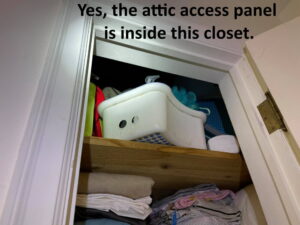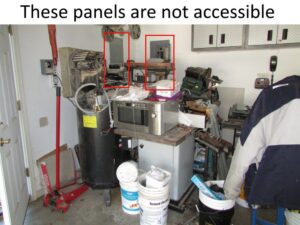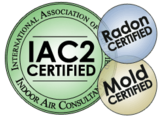We’re featuring a blog from our friends at Structure Tech Home Inspections.
A lot of people always ask about how they can best prepare for an upcoming Home Inspection, so we thought we’d share some tips here for how to best prepare your home for an inspection.
Typically an inspection takes between 2-4 hours depending on the size of the home, but doing some of the following pre-inspection work can make things a lot more smooth, especially if you will not be home during the inspection.
—
Preparing your home for an inspection can mean two things to people.
1.) The first is to get the house in tip-top shape, making sure that the home inspector won’t have to write a long list of minor repairs that take five minutes each. It’s a great thing to do, but it takes a lot of time and effort, and there’s a ton of stuff to look at.
2.) For the rest of us, preparing your home for the inspection means making everything accessible so it can be inspected the first time. We send out a notice to the seller before our home inspections, letting them know what they can do to make sure that the inspection can be completed without second trips to the home, which causes hassles and delays for everyone involved. Today we’ll share that list, along with some added commentary.
Utilities On. The gas, water, and electricity to every home should be on for the inspection. You might think to yourself that this is only common sense, but on the other hand, that applies to most of this stuff on this list. We’re bothering to mention this stuff because we’ve had it not happen too many times to count. This is not common sense for many home sellers.
 Gas pilots lit.
Gas pilots lit.
To properly inspect a gas appliance, we need to see it in operation. Many modern gas appliances have electronic ignition, but many older appliances don’t. In fact, there are still plenty of new gas appliances that have standing gas pilots that need to be manually lit. The two most common ones are water heaters and gas fireplaces. Many homeowners turn off the pilots to their gas fireplaces in the spring, but most home inspectors will not light gas pilots. So what does the home inspector say about the appliance when the pilot is off? That we couldn’t inspect it, and that the appliance should be inspected by a qualified person after the pilot has been lit.
Everything accessible. There’s a ton of stuff that the home inspector needs to have access to, many of which people never think about. Here’s the most common stuff that we frequently have challenges with, usually because of stored items:
 Crawl space: if there’s an access panel, please make sure it’s not hidden, locked, or blocked.
Crawl space: if there’s an access panel, please make sure it’s not hidden, locked, or blocked.
- Furnace: please make sure that there is clear access to the furnace.
- Water heater: again, clear access is needed for proper inspection.
- Electric panel(s): If there is anything that could prevent the safe removal of the electric panel cover, please remove it. Besides the usual list of stored items, this might include such items as pictures, cabinets, and shelves.
- Garage: attached garages are never a problem, but detached garages always need a method of access. Please remember to leave a key or a garage door opener for the home inspector.
- Attic(s): without a doubt, attics are the biggest challenge to home inspectors. The access panel must be accessible, and if the ceiling is caulked, painted, or sprayed shut, it should be opened up before the inspection.
- Drapes/curtains/blinds opened. We’ve broken many window coverings over the years in the course of normal operations, and these can take a lot of extra time to open and close. To reduce the risk of damage to your window coverings, and to help the inspection take less time, open all of the window coverings.
- Pets secured. I’ve had cats bolt past me while entering or leaving houses, and I’ve had them follow me into attics and crawl spaces before. I also had a cat attack me once, biting me in the leg. I had a ferocious Chihuahua attack me once too, which was rather comical, but still. What if I had panicked and kicked the dog? These situations are completely avoidable.
- Appliances plugged in. If an appliance is unplugged, we assume it was unplugged for a reason. Numerous experiences have taught us this important lesson. If an appliance is functional, it should be plugged in when the home inspector arrives.

